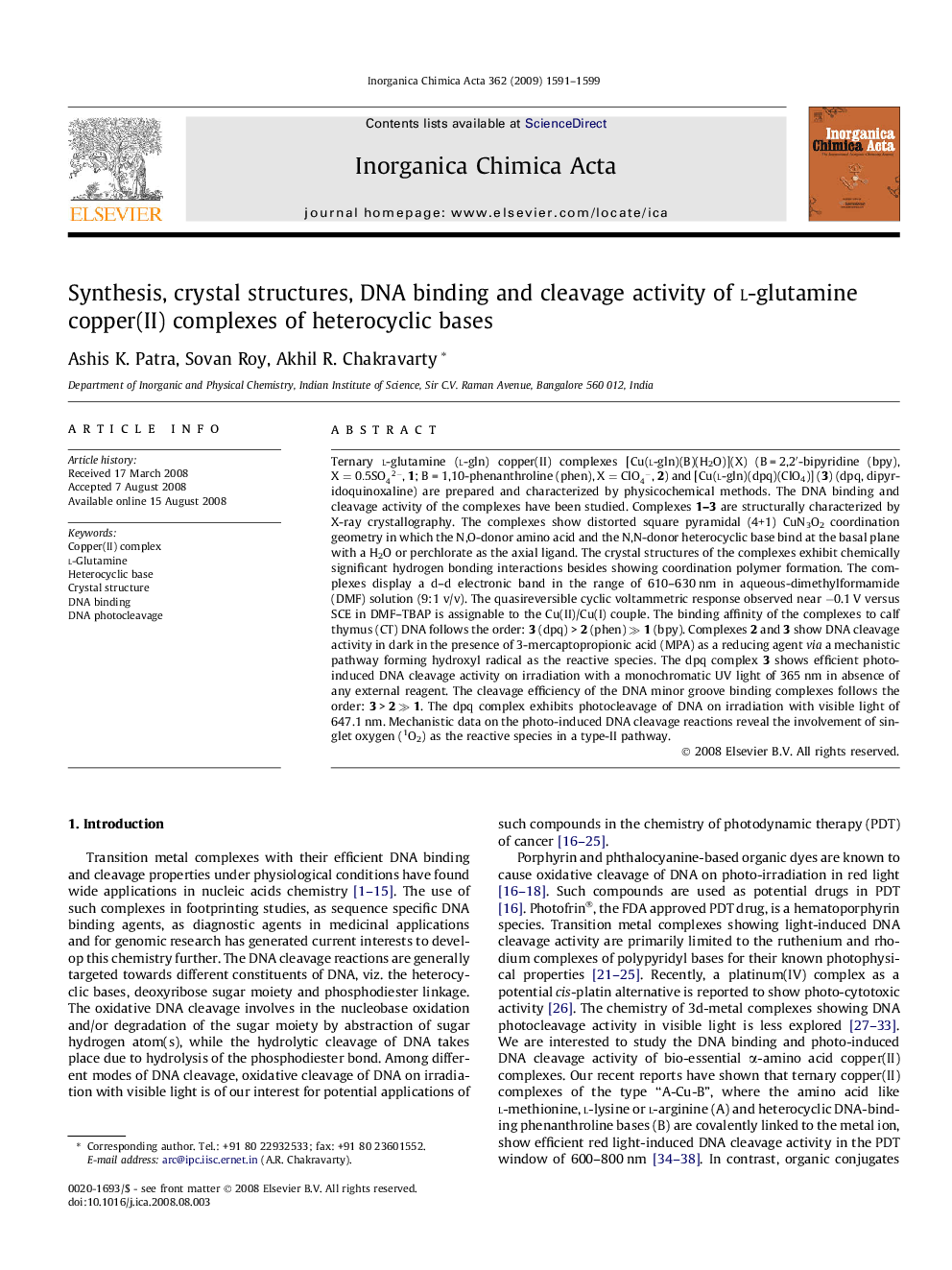| کد مقاله | کد نشریه | سال انتشار | مقاله انگلیسی | نسخه تمام متن |
|---|---|---|---|---|
| 1312695 | 975482 | 2009 | 9 صفحه PDF | دانلود رایگان |

Ternary l-glutamine (l-gln) copper(II) complexes [Cu(l-gln)(B)(H2O)](X) (B = 2,2′-bipyridine (bpy), X=0.5SO42-, 1; B = 1,10-phenanthroline (phen), X=ClO4-, 2) and [Cu(l-gln)(dpq)(ClO4)] (3) (dpq, dipyridoquinoxaline) are prepared and characterized by physicochemical methods. The DNA binding and cleavage activity of the complexes have been studied. Complexes 1–3 are structurally characterized by X-ray crystallography. The complexes show distorted square pyramidal (4+1) CuN3O2 coordination geometry in which the N,O-donor amino acid and the N,N-donor heterocyclic base bind at the basal plane with a H2O or perchlorate as the axial ligand. The crystal structures of the complexes exhibit chemically significant hydrogen bonding interactions besides showing coordination polymer formation. The complexes display a d–d electronic band in the range of 610–630 nm in aqueous-dimethylformamide (DMF) solution (9:1 v/v). The quasireversible cyclic voltammetric response observed near −0.1 V versus SCE in DMF–TBAP is assignable to the Cu(II)/Cu(I) couple. The binding affinity of the complexes to calf thymus (CT) DNA follows the order: 3 (dpq) > 2 (phen) ≫ 1 (bpy). Complexes 2 and 3 show DNA cleavage activity in dark in the presence of 3-mercaptopropionic acid (MPA) as a reducing agent via a mechanistic pathway forming hydroxyl radical as the reactive species. The dpq complex 3 shows efficient photo-induced DNA cleavage activity on irradiation with a monochromatic UV light of 365 nm in absence of any external reagent. The cleavage efficiency of the DNA minor groove binding complexes follows the order: 3 > 2 ≫ 1. The dpq complex exhibits photocleavage of DNA on irradiation with visible light of 647.1 nm. Mechanistic data on the photo-induced DNA cleavage reactions reveal the involvement of singlet oxygen (1O2) as the reactive species in a type-II pathway.
Ternary copper(II) complexes of l-glutamine and heterocyclic bases are prepared and structurally characterized. Dipyridoquinoxaline complex (3) shows efficient DNA binding and DNA photocleavage activity in red light via 1O2 pathway.Figure optionsDownload as PowerPoint slide
Journal: Inorganica Chimica Acta - Volume 362, Issue 5, 1 April 2009, Pages 1591–1599